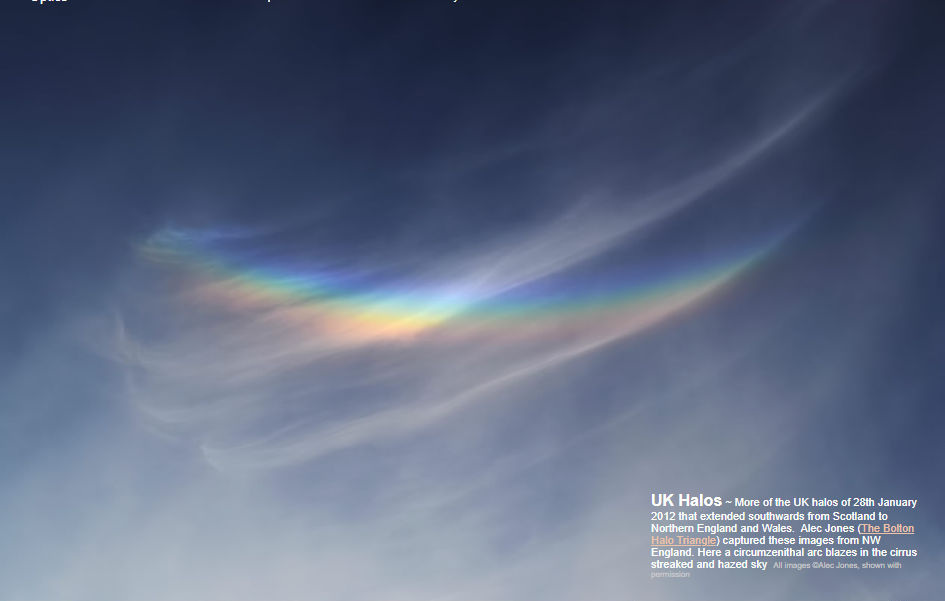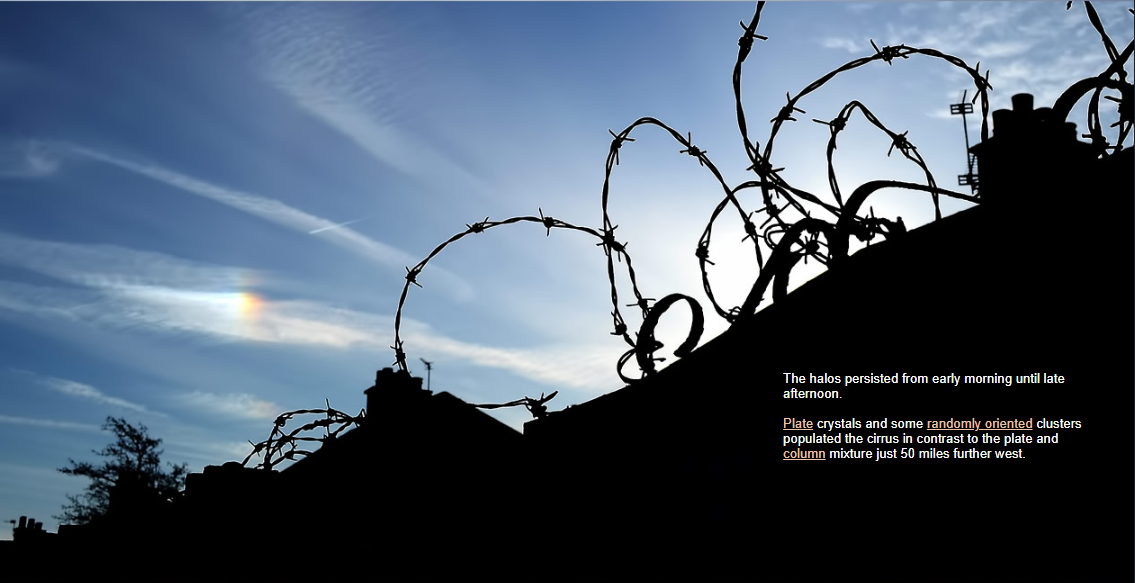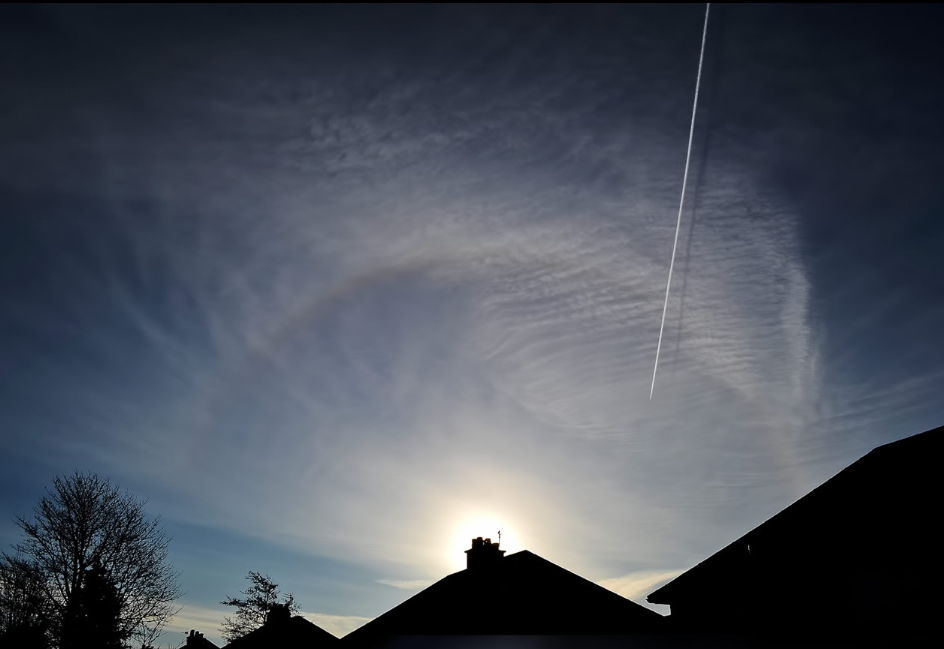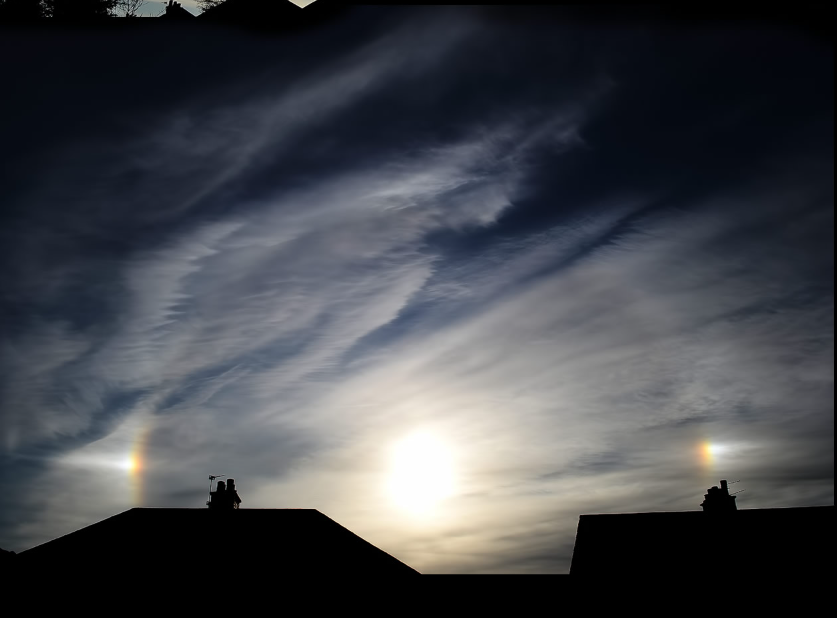OPOD - Halos January 2012
OPOD - Halos January 2012: A Closer Look at the Spectacular Atmospheric Phenomenon
The year 2012 witnessed a stunning display of halos in the United Kingdom, particularly on the 28th of January. These captivating optical phenomena extended from Scotland to Northern England and Wales, leaving onlookers in awe. Captured by the talented photographer Alec Jones, these images showcase the beauty and complexity of atmospheric optics. In this article, we delve deeper into the intricacies of these halos, exploring their formation, persistence, and unique characteristics.
Halos are formed when light interacts with ice crystals suspended in the atmosphere, resulting in the refraction, reflection, and dispersion of light. The 28th of January 2012 was no exception, as plate crystals and randomly oriented clusters populated the cirrus clouds. Interestingly, just 50 miles west of this location, a mixture of plate and column crystals dominated the scene. These variations in crystal shape and orientation contribute to the diverse array of halos observed.
One prominent feature captured by Alec Jones is the circumzenithal arc. This arc appears as a blazing band of colors high in the sky, intersecting the zenith point. It is formed when sunlight passes through horizontally oriented ice crystals in the cirrus clouds. These crystals act as tiny prisms, bending the light and creating a breathtaking display of colors. The presence of cirrus streaks and haze adds an ethereal touch to the already mesmerizing scene.
One remarkable aspect of the halos observed on this day is their longevity. From early morning until late afternoon, these atmospheric wonders persisted, providing ample opportunity for enthusiasts to capture their beauty. The extended duration can be attributed to the stability and persistence of the ice crystal clouds, which remained intact throughout the day.
To fully appreciate the intricacies of these halos, it is essential to examine their individual components. The most common halo observed is the 22-degree halo, which forms a circle around the sun or moon. This halo is caused by the refraction of light through hexagonal ice crystals. Additionally, a variety of other halos can be seen in the images captured by Alec Jones, including the circumzenithal arc, the parhelic circle, and the upper tangent arc. Each of these halos has its unique characteristics and formation mechanisms.
The beauty of atmospheric optics lies not only in the diversity of halos but also in their ability to captivate observers from different locations. While these halos were captured in the United Kingdom, similar phenomena can be observed in various parts of the world under specific atmospheric conditions. This global occurrence highlights the interconnectedness of our planet's atmosphere and the fascinating interactions that take place within it.
In conclusion, the halos observed on the 28th of January 2012 in the United Kingdom were a spectacle to behold. Thanks to the skill and dedication of photographers like Alec Jones, we can marvel at these intricate atmospheric phenomena from the comfort of our screens. The combination of plate crystals, randomly oriented clusters, and cirrus streaks created a mesmerizing display of halos that persisted throughout the day. By studying and appreciating these natural wonders, we gain a deeper understanding of the complexity and beauty of our atmosphere.

UK Halos ~ More of the UK halos of 28th January 2012 that extended southwards from Scotland to Northern England and Wales. Alec Jones (The Bolton Halo Triangle) captured these images from NW England. Here a circumzenithal arc blazes in the cirrus streaked and hazed sky All images ©Alec Jones, shown with permission

The halos persisted from early morning until late afternoon.
Plate crystals and some randomly oriented clusters populated the cirrus in contrast to the plate and column mixture just 50 miles further west.


Note: this article has been automatically converted from the old site and may not appear as intended. You can find the original article here.
Reference Atmospheric Optics
If you use any of the definitions, information, or data presented on Atmospheric Optics, please copy the link or reference below to properly credit us as the reference source. Thank you!
-
<a href="https://atoptics.co.uk/blog/opod-halos-january-2012/">OPOD - Halos January 2012</a>
-
"OPOD - Halos January 2012". Atmospheric Optics. Accessed on November 26, 2024. https://atoptics.co.uk/blog/opod-halos-january-2012/.
-
"OPOD - Halos January 2012". Atmospheric Optics, https://atoptics.co.uk/blog/opod-halos-january-2012/. Accessed 26 November, 2024
-
OPOD - Halos January 2012. Atmospheric Optics. Retrieved from https://atoptics.co.uk/blog/opod-halos-january-2012/.